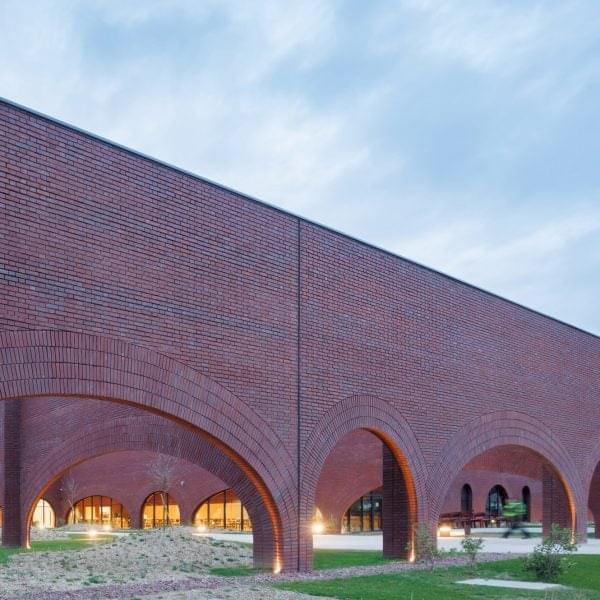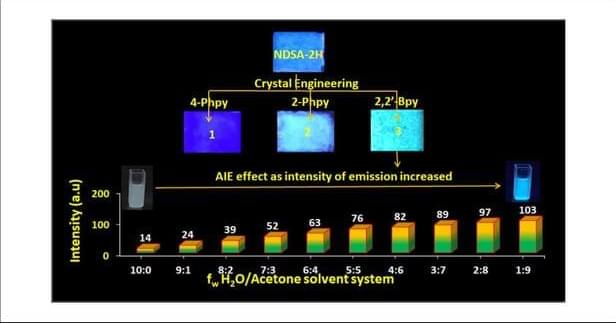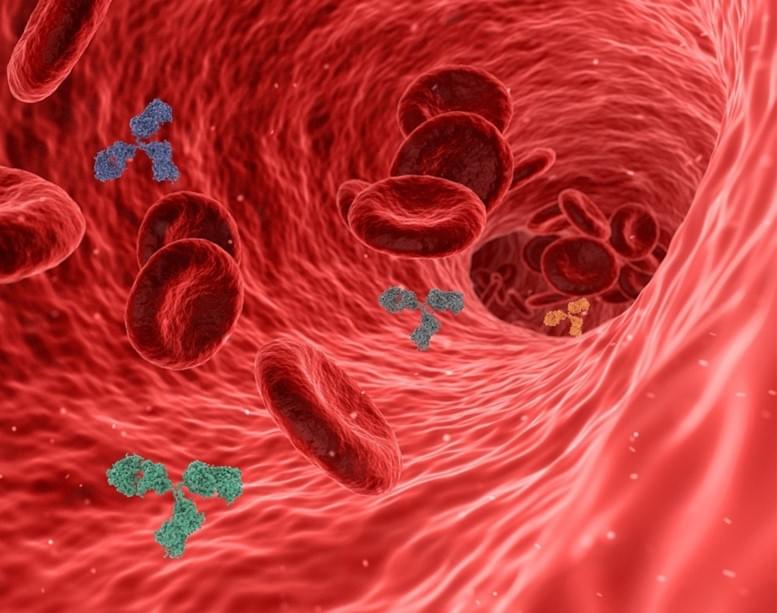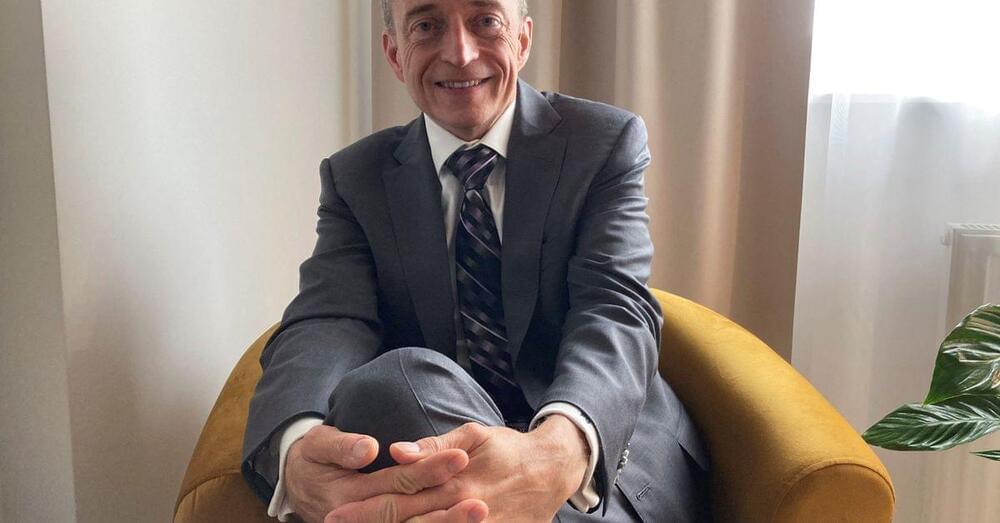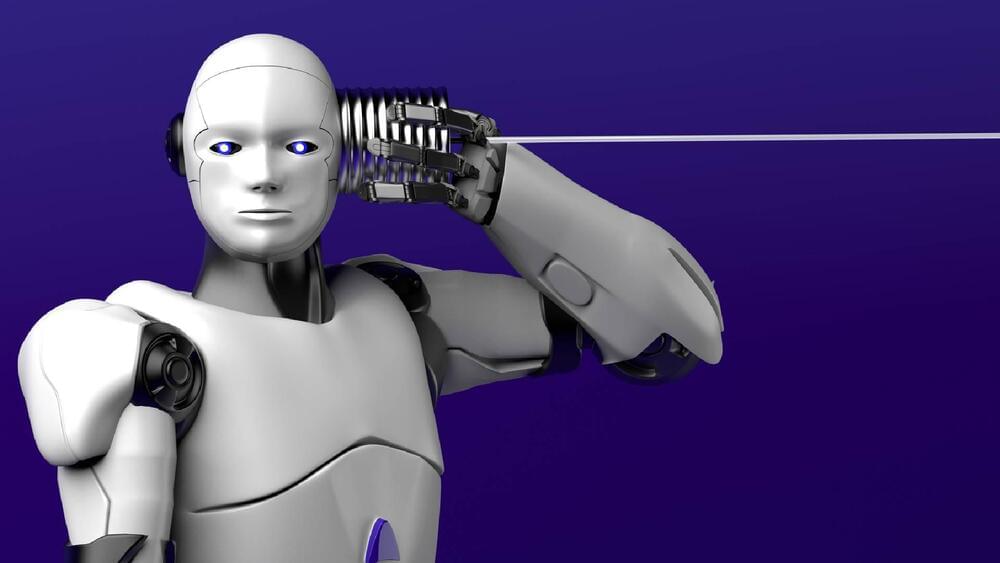French-Lebanese architect Lina Ghotmeh has created a brick workshop in Louviers, France, for luxury brand Hermès that is the first industrial building to achieve France’s highest environmental labelling.
The wood-framed Maroquinerie de Louviers workshop, located in Hermès’ hub in Normandy, was built from over 500,000 bricks produced by local brick-makers located 70 kilometres from the site.
Large, swooping arches open the 6,200-square-metre building up to an internal courtyard around which the workshops are placed, with arched windows designed to let in natural light.
